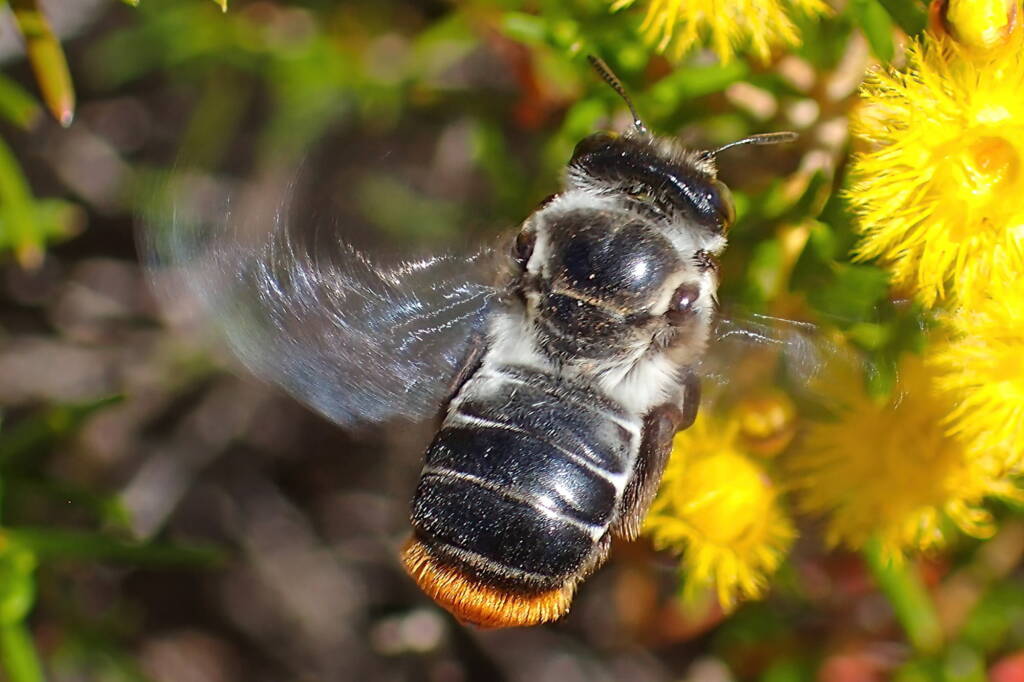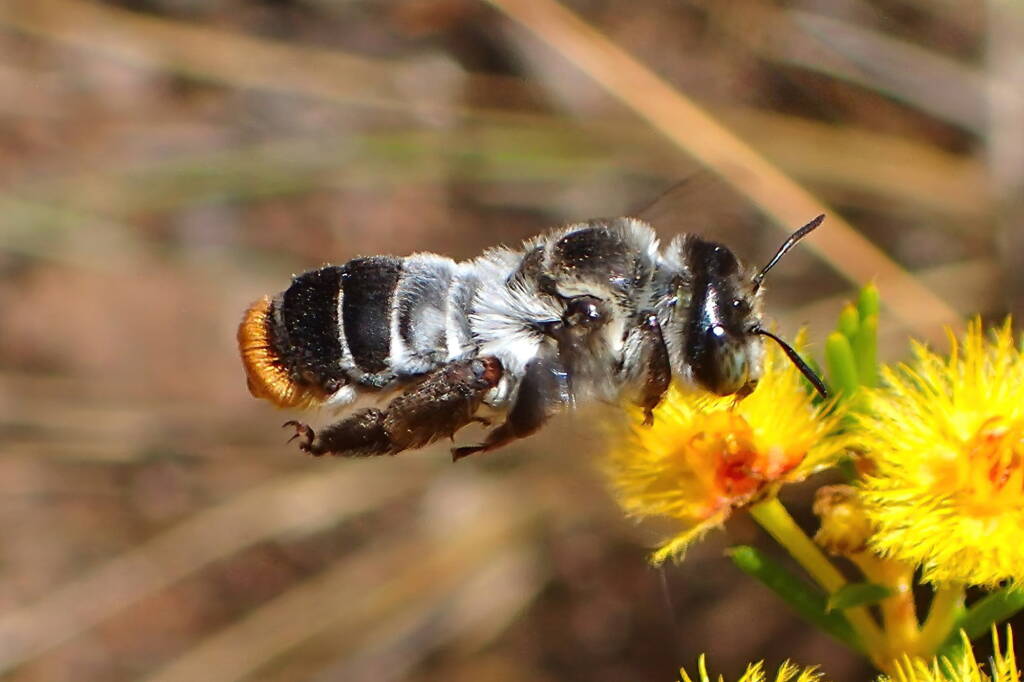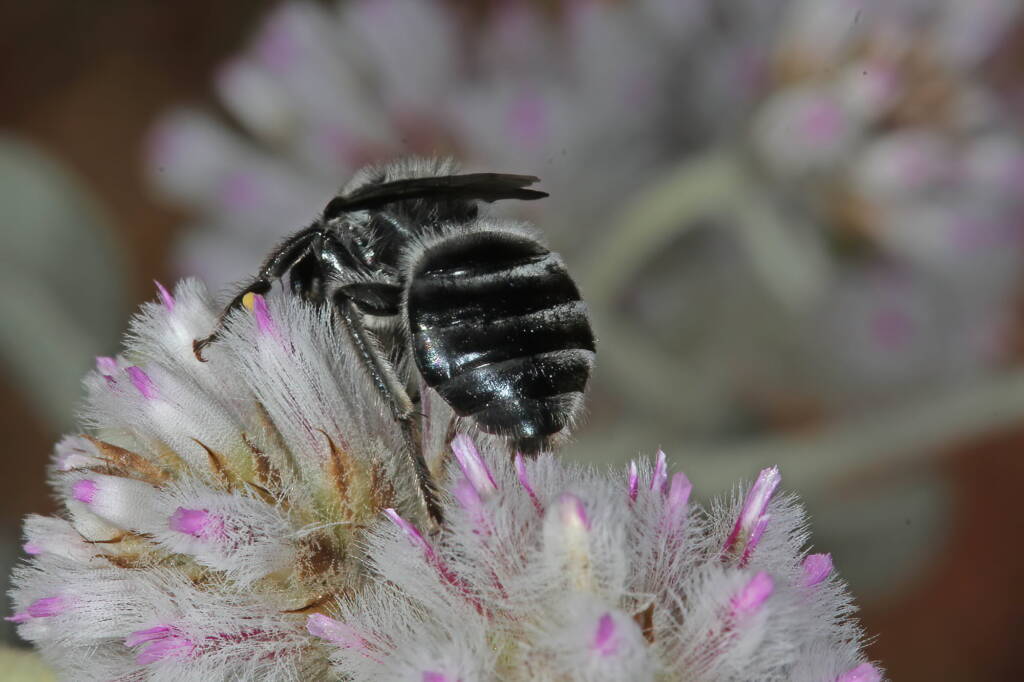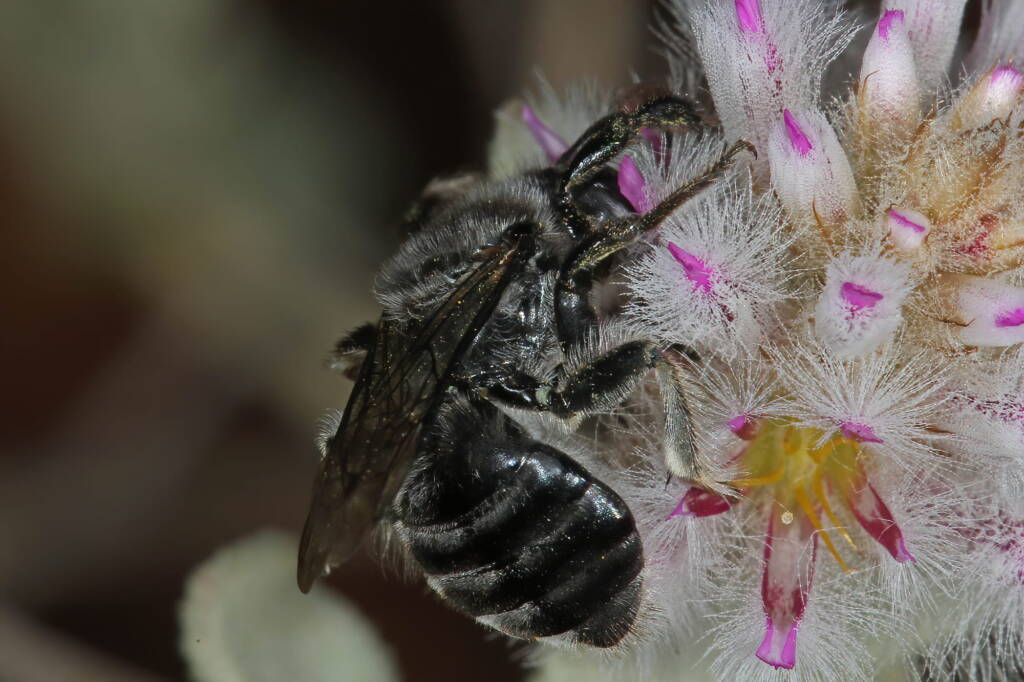Bees AnatomyBees Antenna It’s in the eyes Pre-pygidial fimbria Wings of the bee
Photographs and Author Gary Taylor ◦
A feature that is typical of some ground nesting bees such as Leioproctus and Stenotritida species is the dense long hairs called “pre-pygidial fimbriae” on the last section of the metasoma.
Arrghh… science jargon, losing interest… Righto, hang on, let’s back it up a bit… So we all know in insects it’s “head, thorax, abdomen”, but in bees the last section of thorax is fused to the first section of abdomen so instead of “thorax and abdomen”, it’s “mesosoma and metasoma“.
And the very end bit of a bees bum (and a lot of other invertebrates) is called the “pygidium“. From the Latin “pyga” for rump and meaning “The very end of the rump”, and “fimbriae” is just the term given to those particular hairs because they serve a purpose, like the hairs that collect pollen are called “scopae“…
So, Pre-pygidial fimbriae really just means “bum fluff with a purpose”.



In the following photographs by Marc Newman, you can see the “pre-pygidial fimbriae” hairs on the last section of the metasoma.
Footnote & References
- Images and content contribution by Gary Taylor, Western Australia
- Photographs Leioproctus (Alokocolletes) excubitor © Marc Newman, Flickr, https://flickr.com/photos/koolbee/albums
Bees AnatomyBees Antenna It’s in the eyes Pre-pygidial fimbria Wings of the bee
Bee BehaviourBubbling Bees Buzz Pollination Operculum lifting behaviour
BeesBees Anatomy Bee Behaviour Blogging Bees… Bees – image index Amegilla Bee Apis mellifera Austroplebeia australis Austrothurgus Braunsapis sp Ceylalictus perditellus Colletidae Euryglossinae Exoneura Homalictus Hyleoides bivulnerata Lasioglossum Lasioglossum (Chilalictus) Lipotriches Megachile Meroglossa Stenotritidae Tetragonula Thyreus Xylocopa





